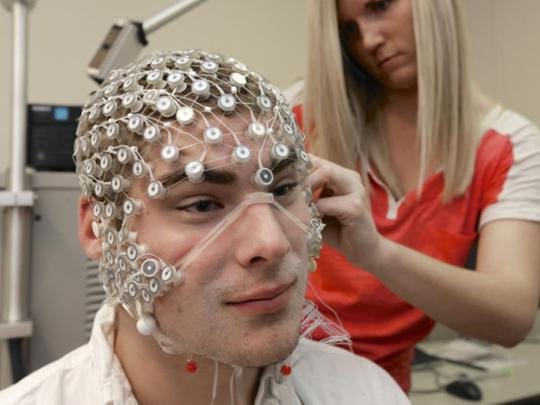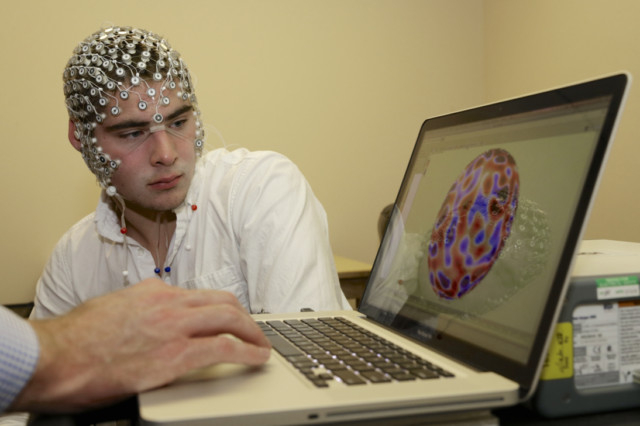
A brain wave test could diagnose autistic kids more accurately — and earlier
The brains of children and adolescents with severe autism react differently to certain audio-visual stimuli than children and adolescents without autism, according to a new study. The findings have the potential to lead to a more objective and accurate diagnostic tools for the disorder.
The study, which was conducted by researchers at Albert Einstein College of Medicine at Yeshiva University, found that a brain wave test shows promising signs of being an accurate biomarker for autism. The results were published in the Journal of Autism and Developmental Disabilities recently.
“Ultimately, we’re on the road to developing measures of brain activity that will help to diagnose or recognise autism,” said Sophie Molholm, the study’s co-author and associate professor of paediatrics and neuroscience at Albert Einstein College of Medicine. “A major goal of autism research is to develop these kind so measure so we can diagnose this disorder as quickly as possible.
“As well as trying to say something about what are the strengths and weaknesses of these people, you want to be able to identify them at that stage so that you can begin early intervention.”
The number of US children with autism has surged to 1 in 68, the Centers for Disease Control and Prevention said in March. Just two years ago, the CDC estimated that 1 child in 88 suffered from the disorder.
At present, children who are diagnosed with autism undergo extensive evaluation by doctors and specialists who are experts at identifying the signs. Autistic symptoms can be present in children as young as 6 months, but particularly at the younger ages, those symptoms can sometimes be hard to distinguish from other conditions.
Add to that the fact that symptoms of autism can vary dramatically from patient to patient, and the subjective nature of the diagnostic tools available today to clinicians leave plenty room for error.
The “gold standard” of autism diagnostics for researchers today includes collecting an extensive developmental history from parents, as well sessions with a doctor who can directly observe the child’s actions. They look for things such as repetitive behaviour, having a restricted interest in a single topic or subject, as well as impaired social communication.
Among the symptoms that have long been associated with the disorder: children with autism often respond unusually to things that stimulate the senses, such as sight and sound.
Molholm and her team hypothesised that if the unusual sensory perception of autistic children could be observed through brain wave activity, it could prove to be a useful — and accurate — tool for diagnosing the disorder.
To test the theory, Molholm enlisted a group of 43 children and adolescents between the ages 6 and 17 with autism. They were asked to press a button every time they observed either an image (a red circle), a tone or both an image and a tone simultaneously.
While the participants completed the task, researchers observed and recorded their brain activity using an electro-encephalography test.
Each participant had an electro-cap placed on their heads with more than 70 sensors that function almost like a microphone for the brain, allowing researchers to see and record information about how quickly information was processed and where in the brain that processing occurred.
The children and adolescents in the study who had been diagnosed with the most severe autism symptoms were generally more impaired when it came to social communication and repetitive and limited interest behaviours.
Researchers found that the participants with more severe autism responded more slowly to auditory stimuli. To a lesser but still significant extent, they also responded more slowly to audio-visual stimuli, which requires the brain to process things like sight and sound simultaneously.
Molholm said that the results suggest that the same kinds of brain activity observed in older children can potentially be observed in younger children. The tests also suggest that commonly observed autism symptoms can be accurately identified through biomedical markers.
“One of the things that one would hope is that you can take measures of brain activity that we find to be associated with these certain clinical symptom and apply them at very early developmental stages and determine if it is likely that this person will go on to develop autism, for example,” Molholm said. “Or we can better understand what their strengths and weakness are so we know what to target [with treatment].”
— Washington Post












